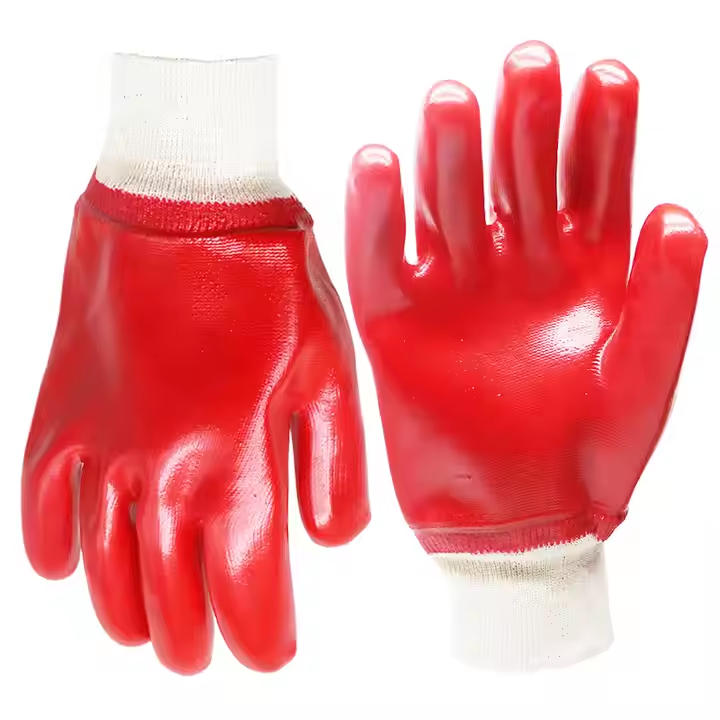PVC (polyvinyl chloride) impregnated gloves are protective gloves made by dipping a glove core (usually cotton, polyester, or nylon) into liquid PVC. PVC coating has good chemical, oil, and water resistance, making it suitable for a variety of industrial applications, especially in wet or greasy working environments.
There are a variety of styles of PVC-dipped gloves, mainly according to the design of gloves; use scenarios and functional characteristics to distinguish.
The following are common styles of PVC impregnated gloves:



Features: The surface is specially treated to increase the wear resistance.



Advantages:

Disadvantages:

Due to their chemical resistance and water resistance, PVC rubber gloves are particularly suitable for chemical, petroleum processing, cleaning, and other work environments that need to deal with grease, acid, and alkali liquids
Service life

How to preserve and care?
Good maintenance and storage can effectively extend the service life of PVC impregnated gloves, ensuring that gloves continue to provide reliable protection in high-risk environments.

When identifying the quality of PVC-dipped gloves, it can be evaluated from the following aspects:.
Coating uniformity:
Elasticity and feel:
Wear resistance:
Chemical resistance:
Comfort of glove core:
Smell:

RM602 Yun Hui Zhong Xin, NO.299 Tong Ji Road , Qian Jiang Jie Dao , Jiang Bei, Ningbo, China
0086-574-87126687
0086-15824203641
sales@toprisesafety.com
Ningbo Toprise Security Products Co., Ltd. is mainly in the wide lines of PPE, road safety products, and outdoor goods, and FRP products that play a dual role as a manufacturer and trader, aiming to offer every customer the most cost-effective products and greatly help reduce every customer’s troubles by offering one-stop shopping for more than 15 years.


Error: Contact form not found.
Have a question? Get in touch instantly using the form below.
Our customer support team would get back to you soon.